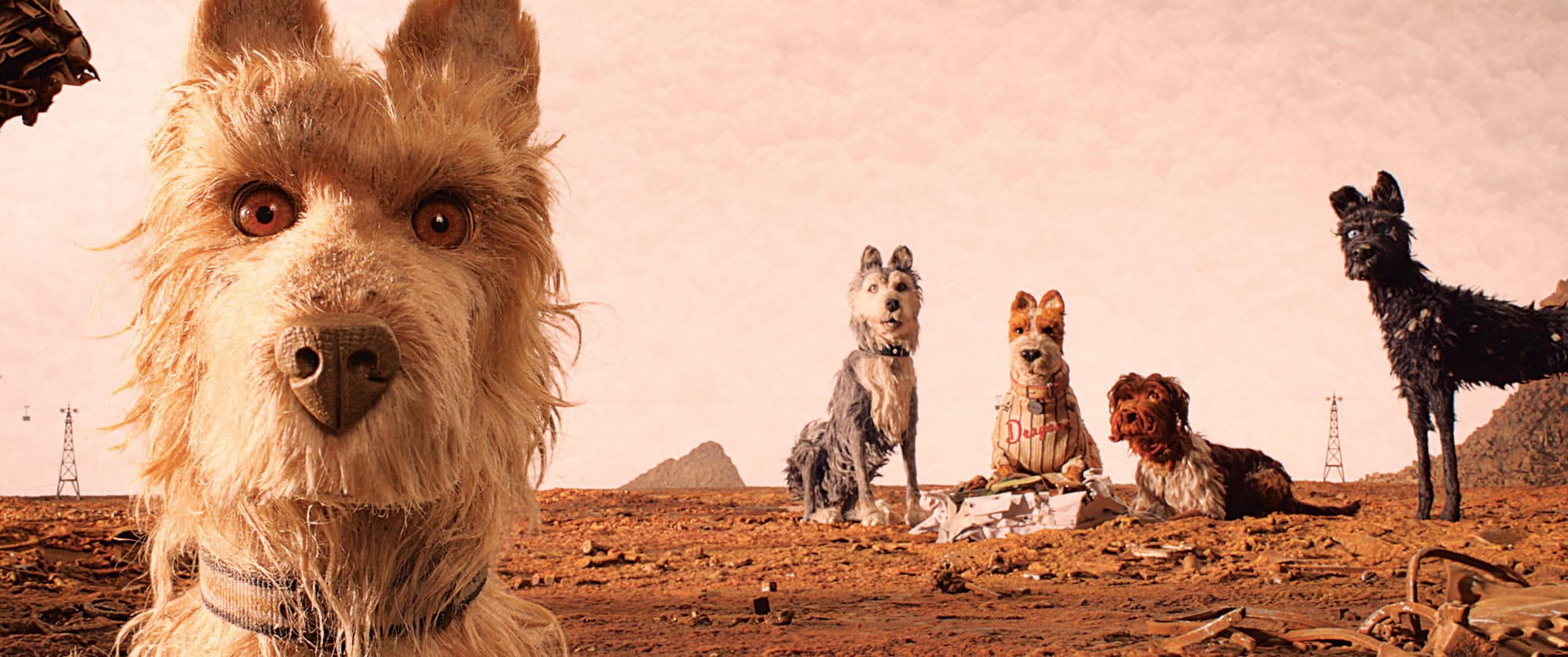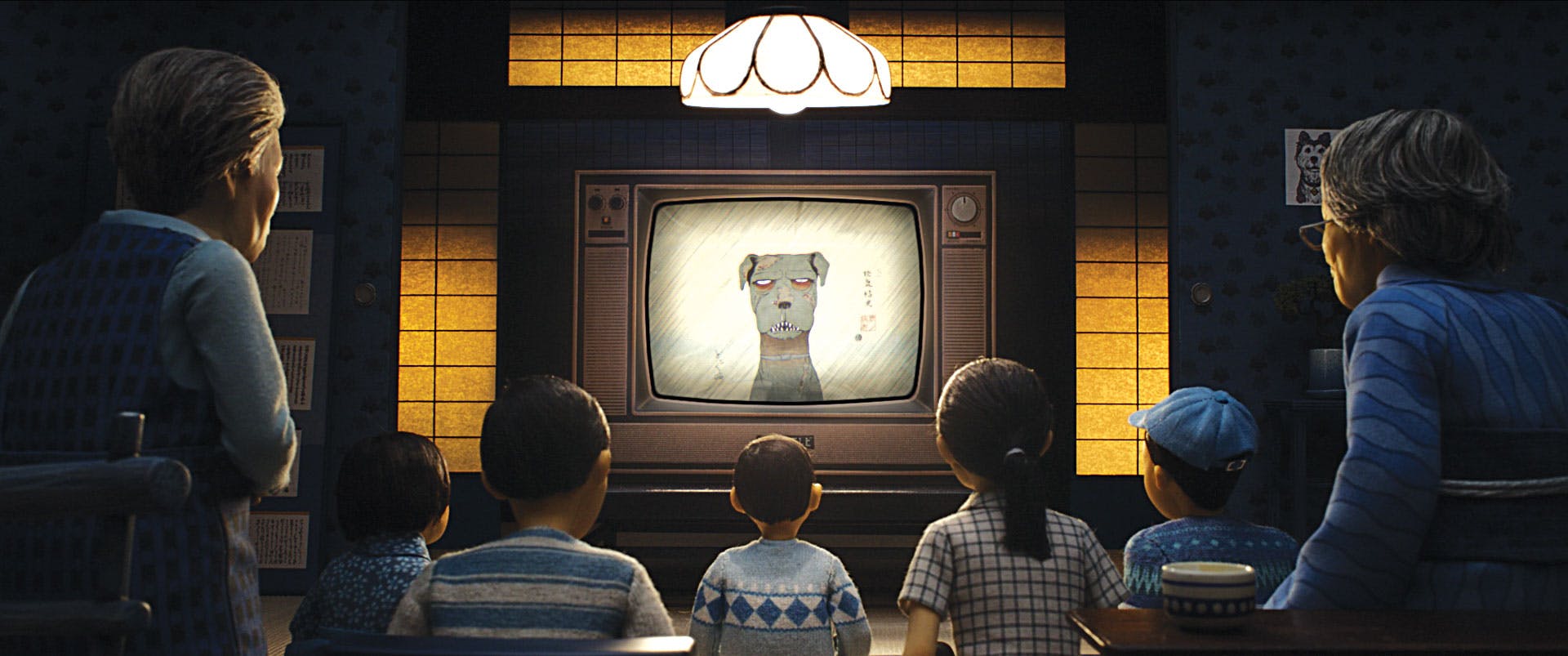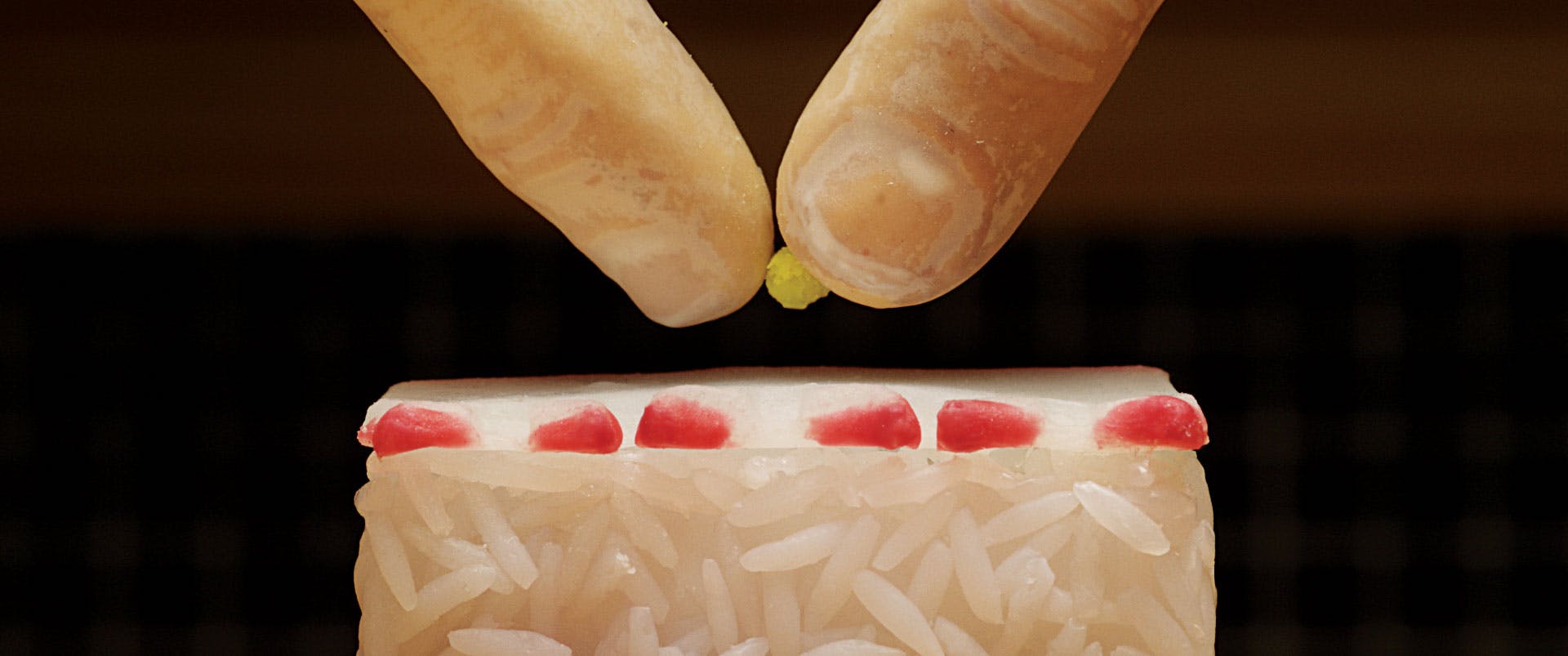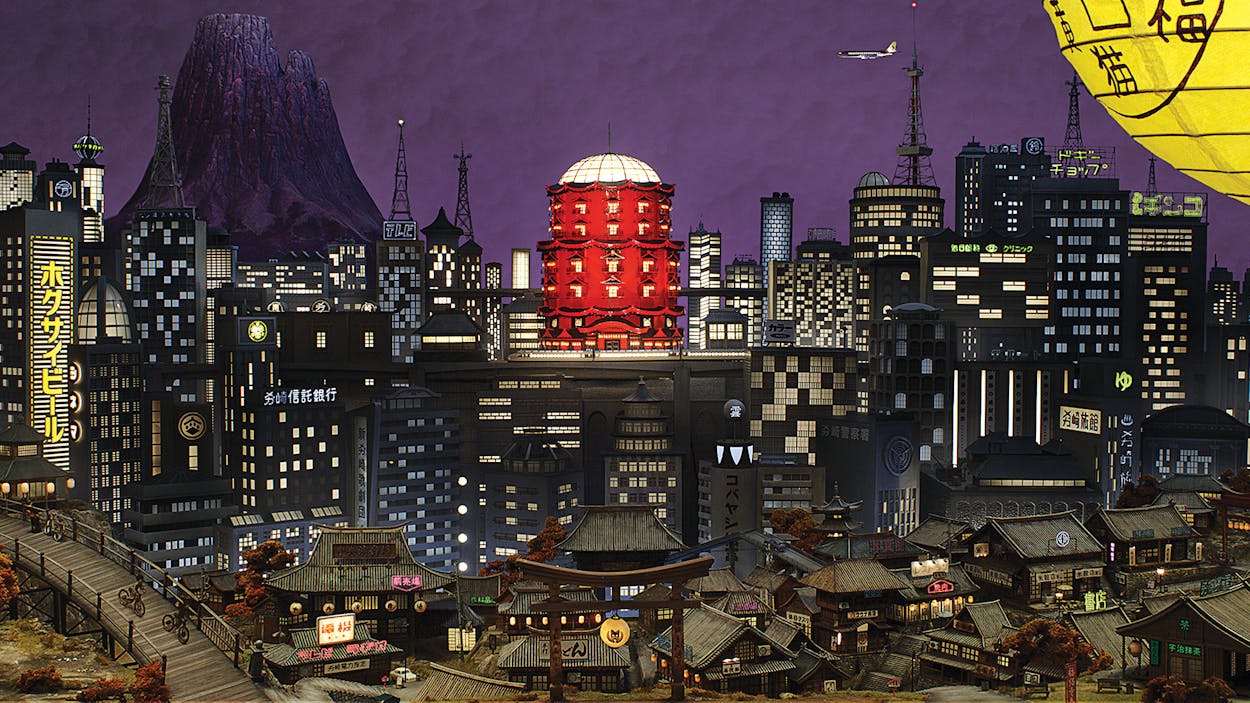In 2009, Houston-born writer and director Wes Anderson ventured into the recherché realm of stop-motion animation with Fantastic Mr. Fox. As knowingly droll and artfully composed as his live-action features, like Rushmore and Moonrise Kingdom, the movie earned him an Oscar nomination for Best Animated Feature.
Last month, Anderson returned with another stop-motion effort, Isle of Dogs, featuring the voices of Edward Norton, Bryan Cranston, Bill Murray, and many other heavy hitters. The adventure, set in 2038, alternates between Japan’s fictional Megasaki City and an island garbage dump, where the corrupt Mayor Kobayashi has exiled the city’s canines.
Even though Anderson’s previous films were much celebrated for their flawless mise-en-scènes, Isle of Dogs may be his most visually daring work so far. Anderson was inspired by the aesthetics of Japanese moviemaking titans Akira Kurosawa (Seven Samurai) and Yasujirō Ozu (Tokyo Story), as well as legendary animator Hayao Miyazaki (Princess Mononoke). Thoughtful touches and meticulousness—like blending stop-motion and traditional 2-D animation and crafting a painstakingly detailed sushi-making scene—draw viewers into Anderson’s whimsical
universe. We asked the director to describe what went into creating the movie’s detailed visuals, and he pulled back the curtain on the years-long process of bringing puppets to life and paying proper tribute to Japanese culture.
His Cinematic Inspiration
Japanese movies brought us to Japan. [Longtime collaborators Jason Schwartzman and Roman Coppola] and I have all spent time in Japan and share a love of it, which is nothing unique. But we especially share a love of Japanese cinema.
The look of Megasaki City came from the really urban, sixties-set Kurosawa movies, from The Bad Sleep Well to High and Low.

Designing the Dogs
We had our own detailed descriptions of the dogs in the script, but they were sort of metaphorical: “This dog looks like a cast-iron radiator. His ribs stick out.” Or we would create a description of a dog based on a breed that doesn’t exactly exist, like “He has the sleek profile of an Alpine mountain hound.”
Really, the descriptions were just a way to make it so that when you read the script, the moment was brought to life. But we never sketched the dogs. We went straight to sculpting.

Combining 2-D and Stop-Motion
Our favorite kind of Japanese animation—the films of Miyazaki—is hand-drawn. I thought it would be great if we could have an aspect of that in our movie. We knew we had a lot of things happening on television [within the movie], so I thought it would be nice if, when you look at the TV sets, you’re seeing the same characters but in a different way.
[Using that technique] also meant that in certain places we could show something on the television screen that we could animate so much more efficiently in 2-D.

Capturing the Actors
During the process of creating skeletons and choosing the surfaces for the puppets, which is a very long process, we recorded the actors at the same time. At a certain point, the look of the dogs became influenced by the voices. How does this puppet feel? What does he sound like?

Getting It Right
We had this idea that we wanted to do this wonderful sushi shot, we thought it would be fun to experience in stop-motion. But once we started doing the first test clay mock-ups, it became clear that our English animation team didn’t really understand sushi, so it was a struggle. We got some help from an American animator, who started consulting with sushi chefs. The knife had to be moving in a way that you recognize as appropriate for slicing fish.
That sounds silly—we’re doing a funny sushi scene. But when it didn’t have the right level of authenticity, it wasn’t as funny, and it didn’t seem proper. It wasn’t as respectful to sushi culture.
- More About:
- Film & TV
- Film
- Wes Anderson







